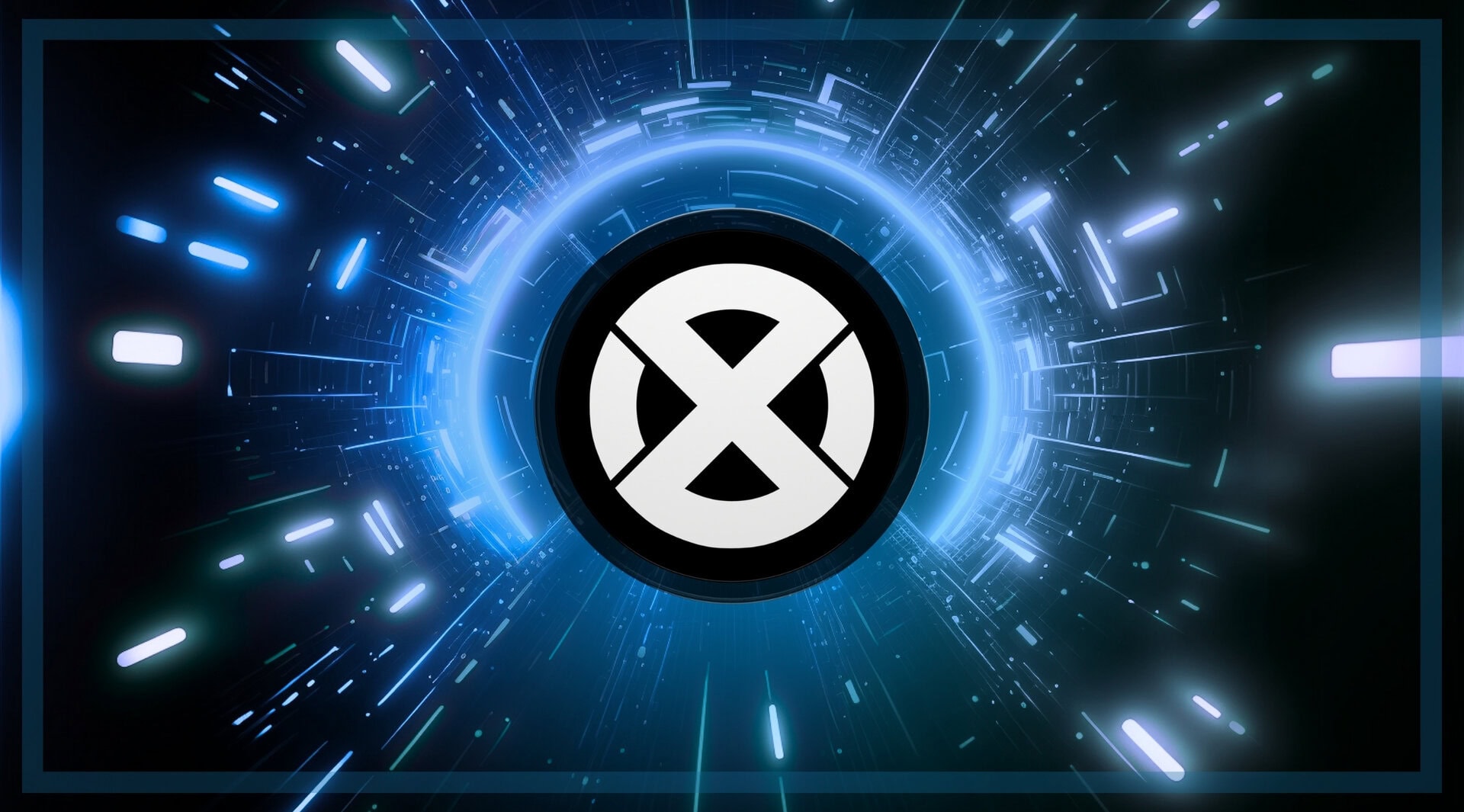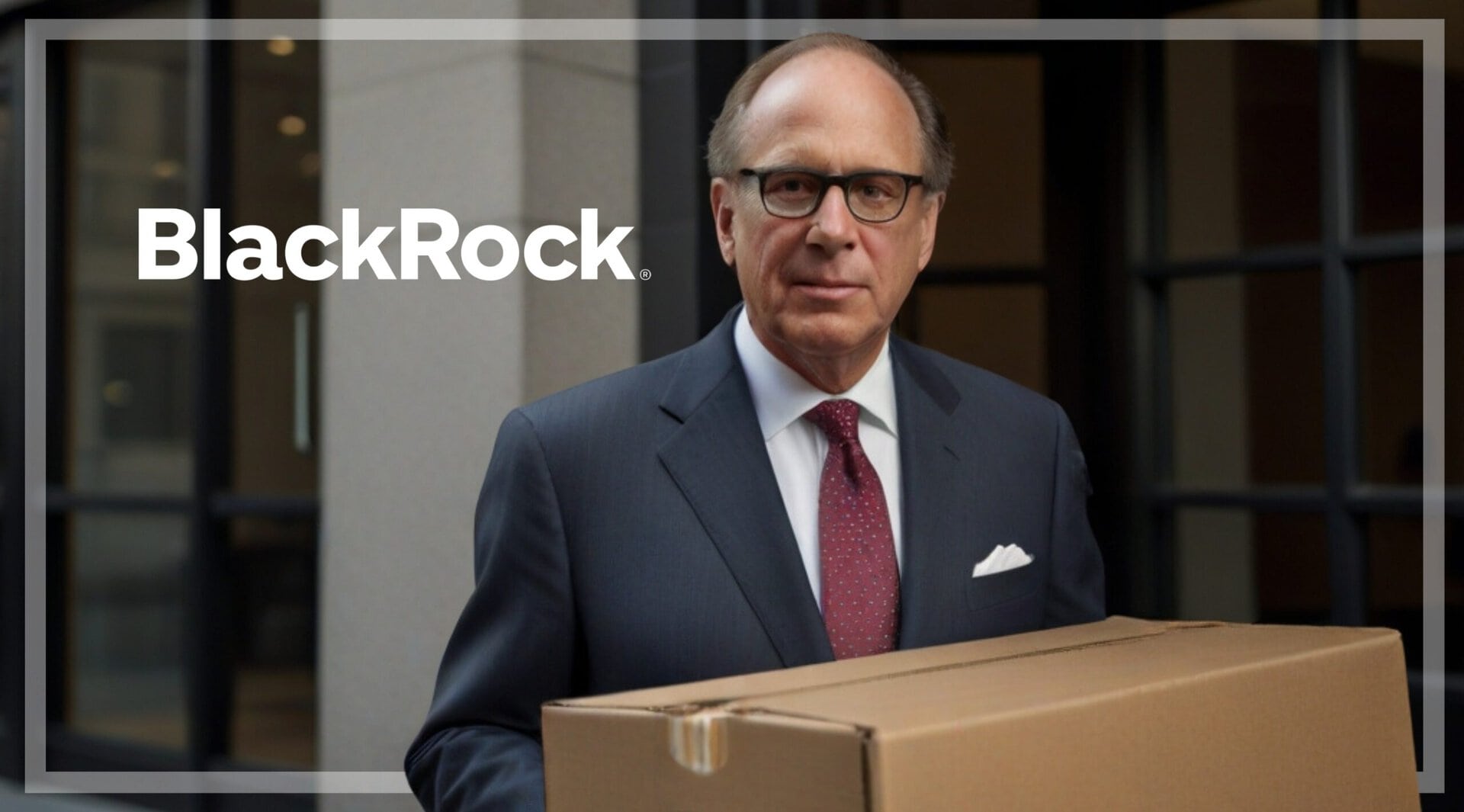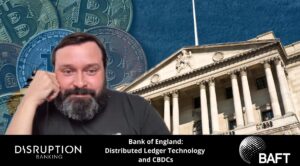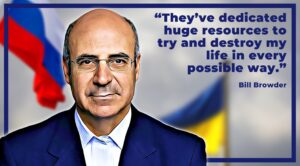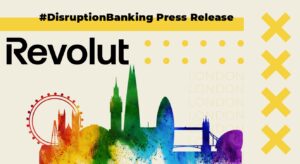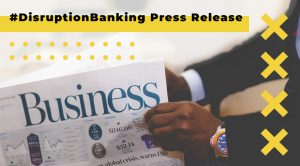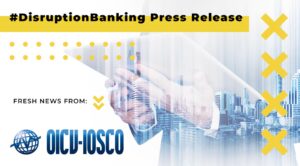Unlike many previous banking events the DisruptionBanking editorial team has attended over the years, this year’s Point Zero Forum was very different. Not only because of the calibre of attendees and speakers, but because of the proliferation of representatives from some of the most important blockchains today. Ripple, Binance, OKX, Crypto.com, and Chainlink were some companies with large contingents at the forum. Another one is Cardano, or more specifically the Cardano Foundation, the independent, Swiss-based not-for-profit organization tasked with advancing Cardano, the Layer-one blockchain, as a public infrastructure across a wide range of industries.
As the event is focused on sustainability and ESG, it was important that the companies presenting at the forum shared relevant topics. The Cardano Foundation did just that. This week the Foundation, in collaboration with the Crypto Carbon Ratings Institute (CCRI), released a MiCA-compliant sustainability indicator for the Cardano network.
The Cardano Foundation and Crypto Carbon Ratings Institute (CCRI) this week announced the release of MiCA-compliant sustainability indicators for the Cardano network.#sustainability https://t.co/wXPAdv7UGJ
— #DisruptionBanking (@DisruptionBank) July 3, 2024
The story is of particular interest as the Cardano Foundation is heavily involved with initiatives in Africa as well as supporting the UNHCR. But, most importantly, what the foundation has tried to do is get ahead of the game when it comes to MiCA compliance.
What is the Markets in Crypto Assets Regulation (MiCA)?
In June 2023 the European Securities and Markets Authority (ESMA), in close cooperation with EBA, EIOPA, and the ECB, started the implementation phase of the Markets in Crypto Regulation (MiCA), a new range of technical standards which will be published sequentially in three packages with the regulation expected to be fully applied by December 2024.
The regulation covers crypto assets that are not currently regulated by existing financial services legislation. However, very few companies have started to prepare for the regulation. Indeed, as of a recent study, only 9% of firms are prepared, whilst 25% of affected firms have yet to initiate preparations.
With Cardano things are different. On the final day of the Point Zero Forum, Frederik Gregaard, Chief Executive Officer of the Cardano Foundation opened a session called ‘Blockchain & ESG: Creating positive impact with blockchain technology’. Our editorial team went along to find out more about what is happening at Cardano.
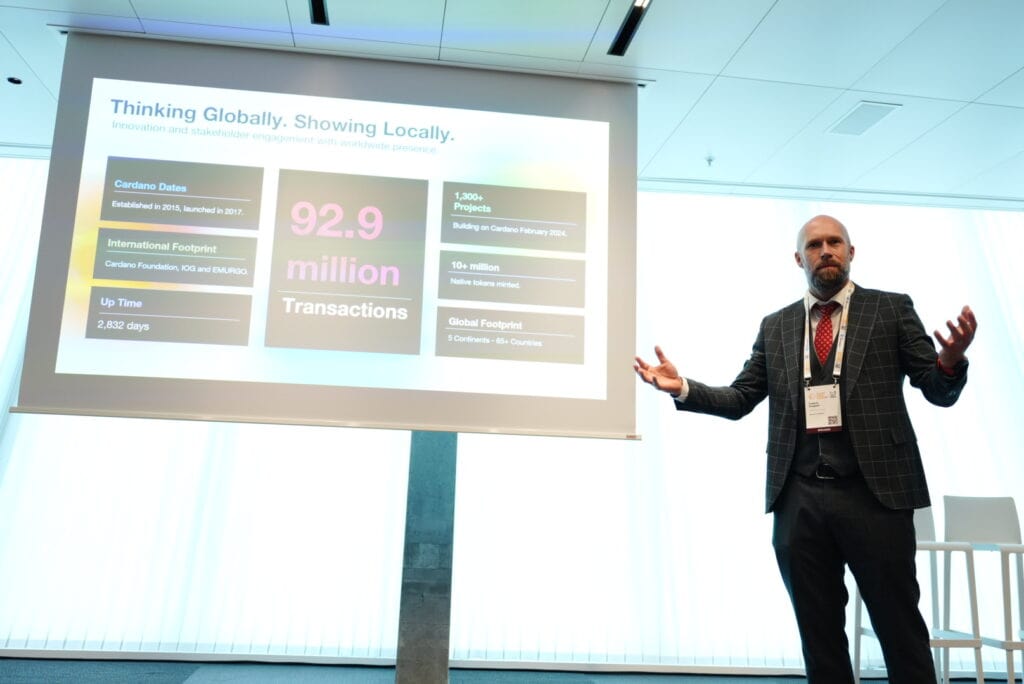
Cardano, a Blockchain for Everyone, Not Just the Privileged Few
Frederik started his keynote by explaining how this session was for people who care about the world, highlighting how this specifically applied to the infrastructure available to people. He stipulated that everybody should have access to this infrastructure and not just the privileged few.
Frederik continued by adding that the Cardano Foundation is a non-profit organization with a mandate to promote third generation blockchains. It isn’t just Cardano’s blockchain that it promotes, but also the interoperability with other blockchains and legacy systems.
The first Point Zero Forum took place in Switzerland in 2022. Over the years the event has seen an increase in interest from regulators, central bankers, financial institutions, and the wider fintech ecosystem. 2024 was a bit different. Blockchain and digital assets are now topics on the table, and the legislation being released in various jurisdictions around the world confirms this.
Frederik pointed to the Global Layer One (GL1) initiative as an example of how things have changed. He was also complimentary about the Swiss regulator, FINMA, which has worked with the Swiss Blockchain Federation and others to support staking services.
🚀 Exciting News Alert! 🚀
— Johnny Sachs (@sachs_johnny) March 14, 2024
I'm thrilled to announce a groundbreaking development from the Swiss SIX exchange! Today, I had the honor of ringing the bell to officially launch the listing of the Cardano Staking ETP by Liqwid (Ticker: CASL). pic.twitter.com/TXORdYbcAR
Cardano is one of the largest decentralized distributed computer networks in the world, Frederik explained. This means that it is also one of the largest non-controllable blockchains in the world. This is particularly significant when it comes to quantum computing. Frederik shared how this is a big area of research at Cardano. In fact, he suggested that by 2025 the algorithm used to secure the Cardano network today will be broken.
But quantum computing wasn’t the only thing he discussed.
Cardano, the Resilient Blockchain
At the end of June, the Cardano blockchain successfully thwarted a distributed denial of service (DDoS) attack aimed at stealing staked tokens. This was through flooding the network with spam transactions to disrupt its operations. The attackers failed.
A few weeks ago the Cardano (ADA-USD) #blockchain successfully thwarted a distributed denial of service #DDoS attack aimed at stealing staked tokens. The attack involved flooding the network with spam transactions to disrupt its operationshttps://t.co/THb6EgVEzR
— Digital Startup (@digitalstartup5) July 8, 2024
Cardano operates a strict peer-reviewed research and development process, which ensures that vulnerabilities are identified and fixed before they can be exploited. Network updates over the years have also been designed with security in mind.
Frederik briefly discussed the attack with delegates. He explained how with a traditional server, like one can find at a stock exchange or financial institution, it is simple to shut down the server to halt such an attack. When you have thousands of anonymous stake pool operators, things are not as easy. And while it is sometimes good to be centralized so one can swiftly respond to an attack, that is not what Cardano is about. Cardano wants to stay decentralized.
“We want to have a situation where no matter what happens in the global world, you can rely on Cardano. You can be sure that it keeps on going,” Frederik explained. If you think about how long the uptime of Cardano is, so far it is nearly 3,000 days and going strong. If blockchains become critical infrastructure for nation-states and financial markets, then it is important to pay attention to challenges like this recent DDoS attack.
Cardano, One of the most Sustainable Blockchains in the World
Frederik has often been quoted by the media as saying that Cardano is one of the most sustainable blockchains in the world. The retort to this statement is, ‘Where is your stamp’? Frederik shared that he doesn’t know how to prove the level of sustainability that the thousands of operators who run the infrastructure have. However, with the advent of the new MiCA regulation the Foundation has stepped up efforts to address this question.
“We work with the Crypto Carbon Ratings Institute (CCRI), a research-driven institution providing carbon estimates for investments in cryptocurrencies and technologies such as blockchain and DLT,” Frederik shared.
“Cardano will never be the most sustainable blockchain in the world in terms of the carbon footprint,” Frederik continued. “This is because we don’t restrict the people who contribute to Cardano. What we’re trying to do is get to a situation where we have a global public infrastructure. One that the whole world can contribute to, creating economic opportunities in many countries and small communities. One where you don’t have to leave your country to get this economic incentive.”
Cardano is addressing more than just the ‘E’ (environmental) part of ESG
Frederik moved on to talk about the Foundations’ work with the UNHCR. He shared that with more than 100 million displaced people around the world today, one of the challenges is to make sure that these people get the aid they are due.
“How do we get more transparency for the people who fight for refugees every single day?” Frederik asked. “How do we raise more money for those organizations whilst also increasing the transparency of those organizations? So that you can trust that your money goes to where it is needed.”
@Cardano_CF CEO @F_Gregaard at @HofSwitzerland panel discussion in Davos.
— Switzerland for UNHCR – Innovation (@UNHCR_CH_Innov) January 31, 2023
👉Raising funds through a staking mechanism to engage the #Cardano community and #ada holders.
Stake with [WRFGS] and donate to save lives💗
➡️ https://t.co/e8dJbLQHv7
#WithRefugees #UNHCR #Cardano pic.twitter.com/h3fsrhbv4J
Frederik raised this as an example of a good blockchain use case. He went on to share how there is an impact stake pool where users can stake ADA (the Cardano native token). Users who stake ADA don’t have to give money to the UNHCR. Returns on staking your ADA simply go directly to the UNHCR. It is a way to donate without taking money out of your pocket. This type of initiative is a way to do something good for humanity. You can trace where it is spent. You can help displaced people.
While the project related to the UNHCR is a good example of the ‘S’ in ESG, Frederik was keen to discuss the ‘G’ too. He suggested that there has been almost no challenge to governance since the early days of Greek democracy. He is also excited about on-chain data.
“Why am I excited about on-chain data?” Frederik asked delegates. “Because in 2,000 years nobody has ever done something dramatic in terms of how you run a nation-state or a corporation. At Cardano, we are now going to put all the data related to governance on-chain.”
Data on how people vote. Online politicians. All this data can be on-chain. What they are creating at Cardano is a new constitution. Treasury, budgets, social decisions, everything needed to run a nation-state will be on-chain.
“We are hoping to create research that can help understand how governance can be in the future,” Frederik summarized. “We are optimizing for the human race and a better society.”
The Methodology behind the Cardano Foundation’s Sustainability Indicators
Following on from Frederik’s insightful overview of what is happening at the Cardano Foundation was another speaker: Alexandre Maaza, Sustainability Lead at the Cardano Foundation. He has an in-depth view of the methodology used by the CCRI.
At this point, it is important to stress that there are a host of ways to measure sustainability outside of the UN’s sustainability development goals. Some of these indicators include energy efficiency, GHG emission management, electronic waste, or natural resource utilization.
Alexandre discussed how blockchain tech can elevate ESG. He also touched on the scientific approach to decentralization.
Alexandre explained how the Cardano Foundation has been working with the CCRI for several years. He added how it’s easier for the CCRI to use their metrics on a blockchain project when they better understand the fundamentals. Instead of treating the CCRI like just another service provider, the team at the Cardano Foundation worked with them directly for some time. As a result, the energy consumption of the Cardano network was established to be the same as the annual consumption of 66 average U.S. households. When it comes to actual CO2 emissions, this is 250 tons, or approximately 33 average U.S. households. All this means that Cardano ranks a little better than the industry medium.
Another important thing that the CCRI established was that no validator on Cardano owns the means of energy generation. The environmental aspect of ESG is easier to break down. It is harder to quantify the social and governance parts of ESG.
Can Decentralization lead to better Governance?
Instead of openly measuring the social part of ESG, metrics like social impact are used instead. In this area, through its work with the UNHCR, Cardano is well positioned. Another element of the “S” in ESG is accessibility and inclusivity. Anyone with a mobile phone can get involved with Cardano.
Finally, Alexandre returned to the topic of governance. He correlated this to the decentralization of a blockchain and referred to work being carried out at the Edinburgh Decentralisation Index. The Index is attempting to find a consensus within the industry about what decentralization really means.
“You need to think about decentralization as a multi-dimensional challenge that is spread geographically,” Alexandre explained. “That’s not only because the power can go out in one particular country posing a risk. It’s also about regulation. Validators in specific countries may have an easier time doing their work and contributing to a network. If these validators can also use their ADA staking rewards and bank them, that might create an opportunity for them to create more validators. Conversely, in other countries, regulation can be tighter and more challenging.”
There were more sound bites that delegates took home from the talk by Frederik and Alexandre. Some of them have probably started staking ADA to help the UNHCR. Others are considering whether Cardano could be the blockchain for them. Either way, the presentation was compelling. We learnt a lot. Especially about how you can help humanity by getting involved with one of the oldest and biggest blockchains in the world.
Author: Andy Samu
See Also:
The First Black Tech Day in London | Disruption Banking
How AgriTech in Africa is what Hedging was created for with InventoryClub | Disruption Banking
The Digital Asset Debate: Closing Day of Point Zero Forum 2024 | Disruption Banking




